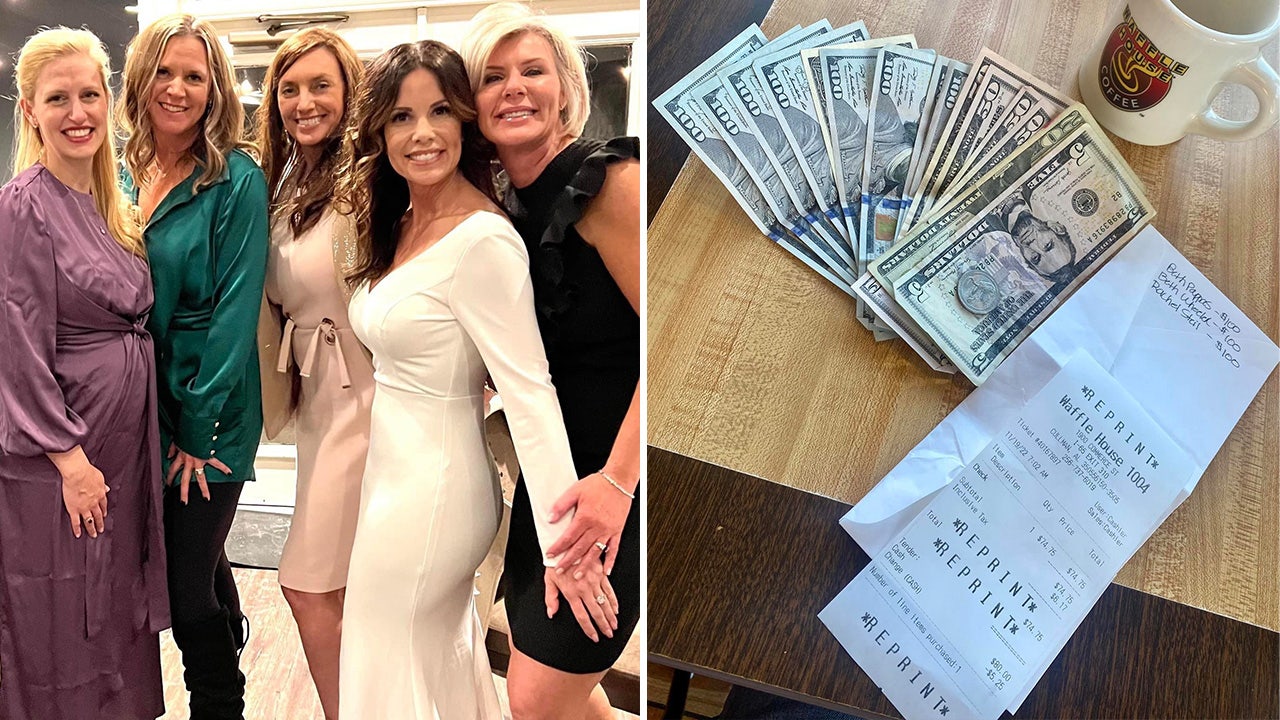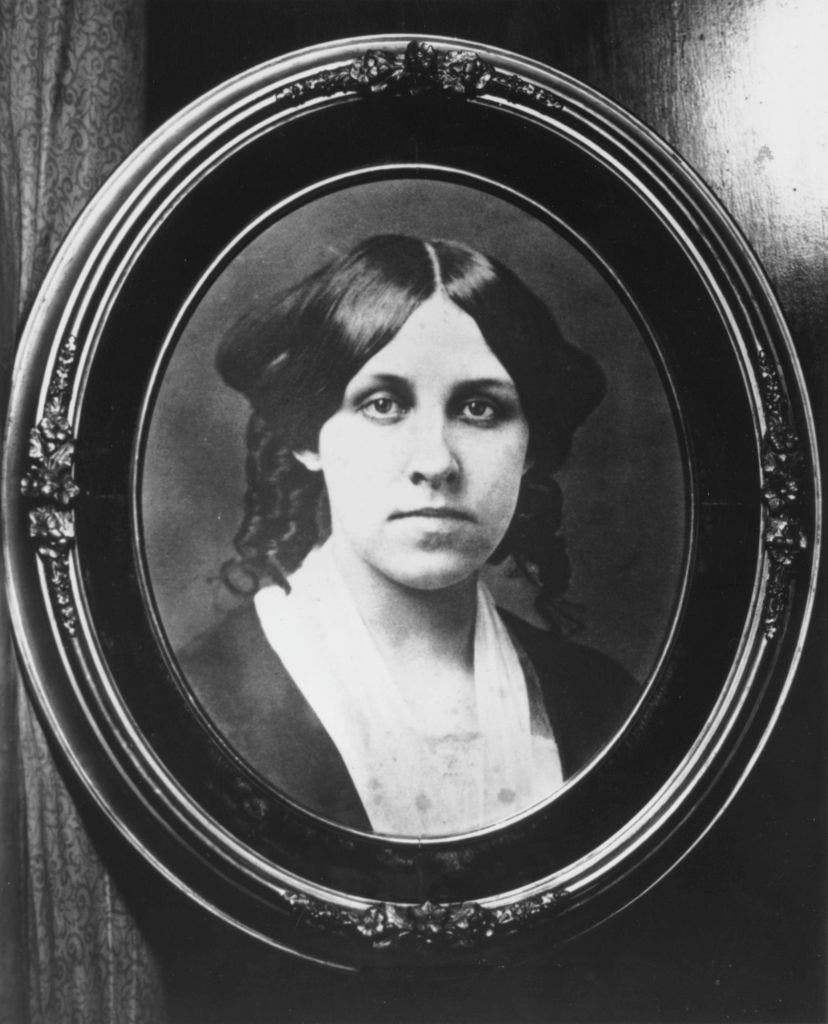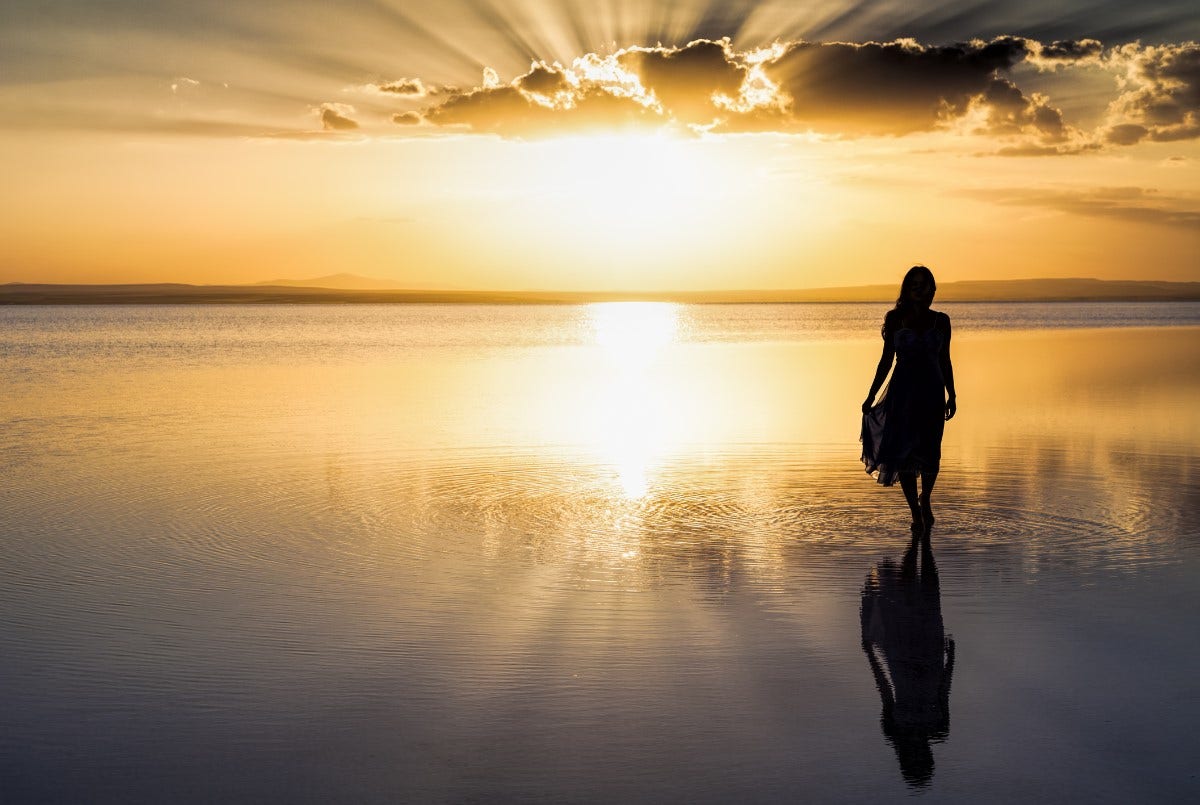This fall, tip your basket to William Blaxton when you pluck a plump apple from a tree, bob for apples on Halloween or cherish your grandmother’s amazing apple pie on Thanksgiving.
Reverend Blaxton, among other claims to fame, planted the first seeds that would fuel a pioneering nation and give apples an image of all-American wholesomeness.
A bookish, eccentric loner, the early English settler nurtured what historians believe were the first apple orchards in what’s now the U.S. in present-day Boston in the 1620s. His name Blaxton is often modernized as Blackstone.
A true pioneer, he settled Boston five years before the Puritans and Rhode Island a year before Roger Williams.
MEET THE AMEIRCAN WHO COOKED UP FROZEN FOODS: ADVENTURER AND INNOVATOR CLARENCE BIRDSEYE
“There may be historical characters who did more than he did for apples in America, but he was certainly the first — and at least the first known — to bring this exotic crop to our shores,” said John Bunker, an American apple expert, grower and author.
“That’s a pretty awesome legacy,” added the New England apple enthusiast, who spoke to Fox News Digital this week while “tracking down ancient trees” in the woods of rural Maine.
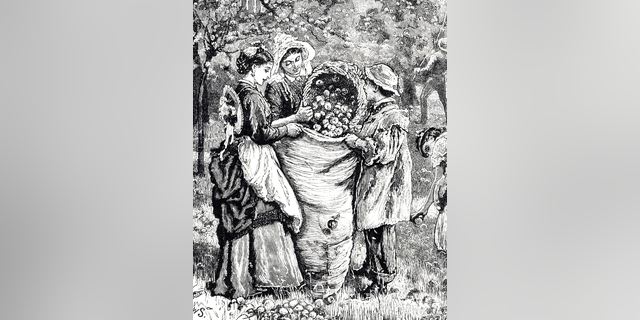
An engraving depicts fruit pickers collecting apples for cider, dated 19th century.
(Photo by: Universal History Archive/Universal Images Group via Getty Images)
Our national heritage is flavored with references to the sweet, juicy fruit. America’s biggest city is called the Big Apple. Wholesome institutions are as “American as apple pie.” Johnny Appleseed created an American legend spreading the gospel and the apple across the heartland.
Yet the fruit is native to Central Asia, likely Kazakhstan.
It had reached Europe at least by the time of Ancient Greece and Rome.
APPLES QUIZ! HOW MUCH DO YOU KNOW ABOUT THIS DELICIOUS FRUIT?
Apples arrived in the Americas only after the explorations of Christopher Columbus sparked the greatest period of food fusion and cultural integration in world history.
“I looked to have dwelt with my orchards and my books in undisturbed solitude.” — William Blaxton
The people of the New World, in addition to apples, soon savored Old World foods such as rice, onions and coffee. Europeans, Asians and Africans discovered Western Hemisphere flavors such as corn, potatoes and tomatoes.
Julius Caesar never tasted tomato sauce, as one observer noted of the Roman diet before the Genoa-born Columbus landed in America.
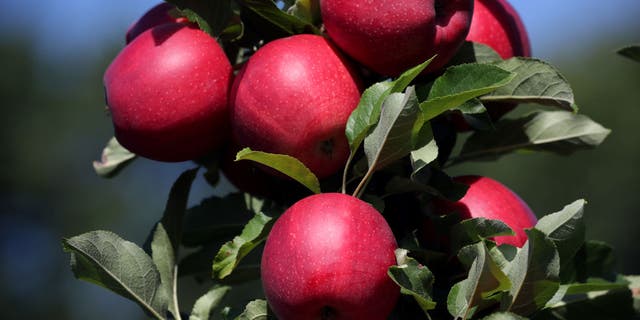
Apples in an orchard at Cider Hill Farm in Amesbury, Massachusetts, on Sept. 7, 2020.
(Photo by Craig F. Walker/The Boston Globe via Getty Images)
The restless Blaxton moved often and typically lived alone, though he did marry at age 64 and at age 65 had a son, John.
He apparently preferred the acquaintance of his apple trees and his books to the company of people.
“I looked to have dwelt with my orchards and my books in undisturbed solitude,” reads a memorial to him today in Cumberland, Rhode Island, near the Blackstone River.
Abandoned in the New World
William Blaxton is believed to have been born on March 5, 1595, in Lincolnshire, England to John and Agnes (Hawley) Blaxton.
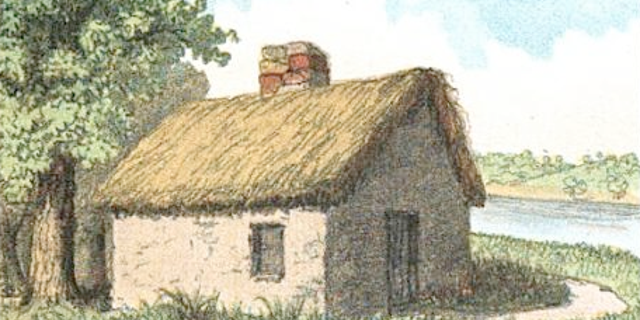
Edwin Whitefield, Homes of our Forefathers in Boston, Old England, and Boston, New England. A drawing conjectured to be of William Blaxton’s home. (Boston: Damrell & Upham, 1889)
(Public Domain)
His mother died when he was boy. He was ordained by the Church of England in 1621, then lost his father the following year.
Left on his own as a young man, and with news of English settlements in Jamestown and Plymouth trickling back to Britain, Blaxton set off for the New World as chaplain aboard the ship “Katherine.”
MEET THE AMERICAN WHO INVENTED THE DONUT
“William brought with him to the New World a large collection of books, approximately 186 in various languages,” wrote Nathaniel Brewster Blackstone in a biography of the settler and his descendants.
Blaxton arrived in Wessagusset, in what is now Weymouth, Massachusetts, just south of Boston in 1623. It was an ill-fated settlement.
Captain Richard Gorges, who led the expedition, hastily returned to England.
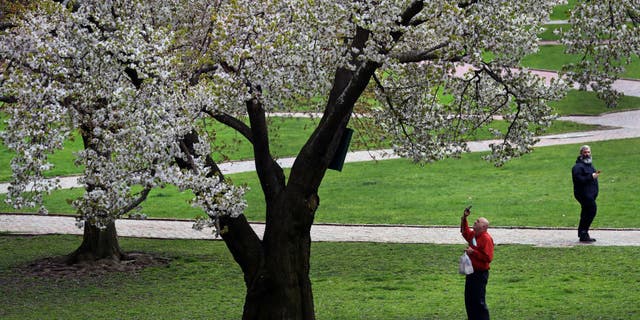
A person takes a photo of a blooming tree on Boston Common in Boston on April 27, 2022. William Blaxton planted America’s first apple orchard along what is now Boston Common. It became America’s first public park in 1634, just before Blaxton left for Rhode Island.
(Photo by David L. Ryan/The Boston Globe via Getty Images)
Blaxton stayed behind and ventured a few miles north to the Shawmut Peninsula, the site of present-day downtown Boston, in 1625.
The Puritans, led by John Winthrop, arrived five years later.
“For several years before Winthrop came in 1630, William Blaxton constituted the entire population of this peninsula … to which attached the name of Boston,” the Bostonian Society claimed in an 1860 presentation.
“He was kind of an eccentric,” Russell Steven Powell, executive director of the New England Apple Association, told Fox News Digital. Powell has written two books about the fruit, “America’s Apple” and “Apples of New England.”
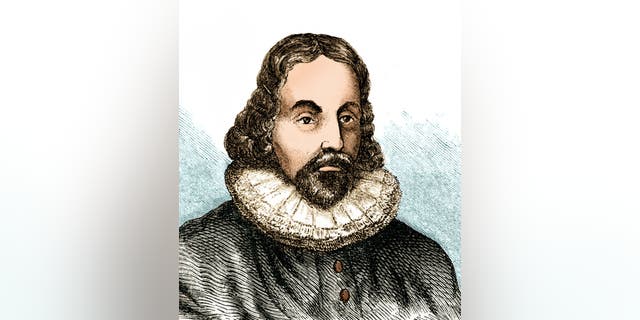
Colorized illustration (after a wood engraving circa 1854) of English Puritan and founder of the Massachusetts Bay Colony John Winthrop (circa 1588-1649).
(Photo by Science Source/Photo Researchers History/Getty Images)
There are several accounts, he said, of Blaxton “riding a bull through the streets, throwing flowers and apples to his friends.”
The staid Puritan reformers and the oddball Anglican minister did not hit it off.
So, for the third time in 12 years, Blaxton (or Blackstone) started a new life on his own.
AMERICA THE BEAUTIFUL: 50 MUST-SEE LANDMARKS THAT TELL OUR NATIONAL STORY
“Because of theological and territorial disagreements with his new neighbors, Blackstone moved west in 1635 to enjoy the solitude and tranquility of a place he called ‘Study Hill’ in the Lonsdale section of Cumberland, on the east bank of the river that now bears his name,” writes the Rhode Island Heritage Hall of Fame.
For several years before Winthrop came in 1630, William Blaxton constituted the entire population of Boston.
“This move gave him the unique distinction of being present-day Rhode Island’s first permanent English settler.”
Perfect food for pioneers
Blaxton spent his days in Boston planting roots before uprooting his own.
“When Governor Winthrop found William in 1630, he had had ample time to have built his home, plant his orchard, and was living quite comfortably,” reported Brewster Blackstone in his biography.
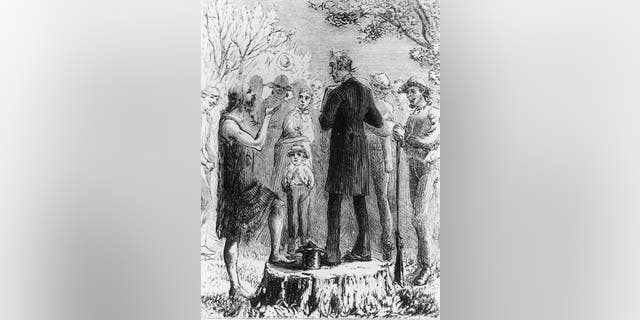
Illustration of Johnny Appleseed making a speech, circa 1820. A legendary figure in American history, he spread apples and goodwill through the Midwest.
(Photo by Fotosearch/Getty Images)
“As for the apple seeds he used to develop his orchards, it is probable that he was foresighted enough to retrieve and save every apple core (which naturally contains seeds) he could find, or otherwise come by,” said the same source.
“Certainly most ships were stocked with apples along with other foodstuffs, therefore, it is doubtful that he brought them with him in 1623 because this kind of living was most likely not his original intention. He would have probably only brought with him his ministerial necessities.”
Apple experts say the earliest known American varieties likely descended from Blackstone’s Boston fruit trees.
Blaxton’s first orchard was planted at the corner of what’s now Beacon and Spruce streets, in the heart of Boston, between Beacon Hill and Boston Common.
That’s according to Amy Traverso, Yankee Magazine food editor and author of “The Apple Lover’s Cookbook,” who shared that with Fox News Digital.
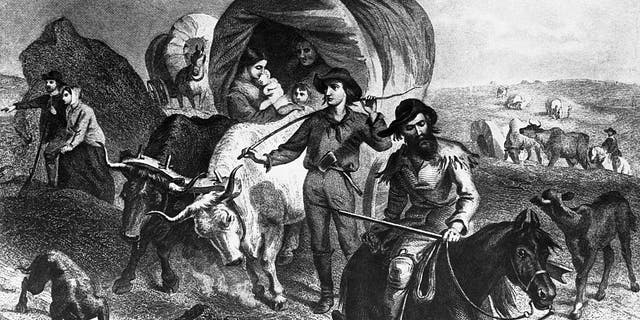
Illustration of pioneers crossing the plains by Henry Bryan Hall, Jr. after Felix Octavius Carr Darley.
(Photo by © CORBIS/Corbis via Getty Images)
“I love to imagine Beacon Hill covered with all those apple trees,” she said.
Blackstone planted his apple orchards from seed, according to all reports, while controlled varietals are grown by grafting.
So the types of apples he grew is unknown. But apple experts say the earliest known American varieties likely descended from Blackstone’s Boston fruit trees.

Lowell Johnson of Apple Jack Orchard in Delano, Minnesota, gave Children of Tomorrow Daycare of Waconia a tour of his apple orchard.
(Photo by Bruce Bisping/Star Tribune via Getty Images)
The Roxbury russet, named for a Boston neighborhood, is the earliest known American apple variety, and is traced to 1635, the year Blaxton left for Rhode Island.
Heirloom apples — Rhode Island greening and yellow sweeting — also likely came from his first orchards.
“Apples teach us what it means to be alive and joyful on earth.” — Apple expert and author John Bunker
The Roxbury russet is an “excellent old cider apple, a fine keeper and good for eating fresh out of hand,” writes Trees of Antiquity.
Added the website New England Apples, “Its crisp and spicy sweet-tart flesh is as good for fresh-eating as it is for making a fine cider … It keeps well in storage.”
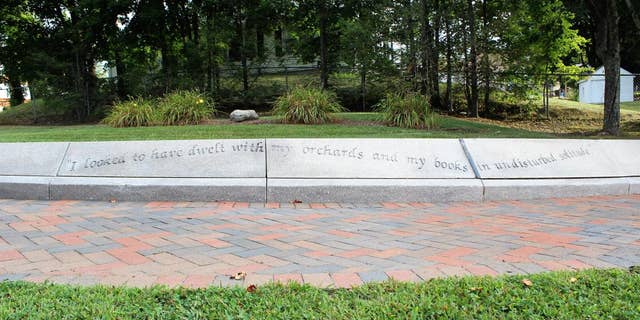
A quote attributed to William Blaxton (Blackstone) at a memorial park in his honor in Cumberland, Rhode Island. "I looked to have dwelt with my orchards and my books in undisturbed solitude," it reads.
(Visit Rhode Island)
Apples could be also be dried, baked, distilled into vinegar — or, most commonly in colonial times — fermented into cider.
They proved perfect food for the pioneers who were spreading across the continent.
They also gave the Europeans who arrived in America, and eventually the Americans who settled new homes across the continent, a much-needed reminder of home.
‘Alive and joyful on earth’
William Blackstone died on May 26, 1675, in Cumberland, the Rhode Island town he first settled in 1635.
The name Blackstone remains common throughout Massachusetts and Rhode Island.
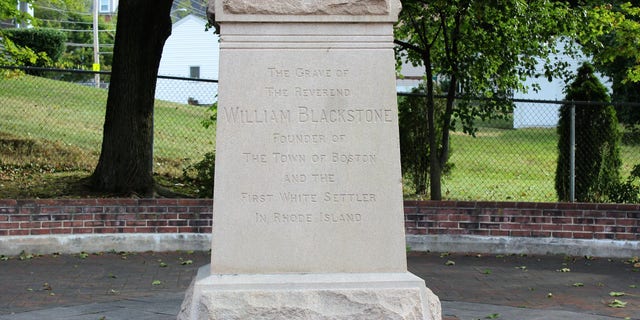
A monument to William Blackstone in Cumberland, Rhode Island. He was the first European settler of both Boston, Massachusetts, and the state of Rhode Island. He died in Cumberland in 1675.
(Visit Rhode Island)
The land he sold to the Puritans became Boston Common, founded in 1634, just before he left the Shawmut Peninsula.
It is the oldest public park in America today. It predates Central Park in New York City, for example, by 224 years.
Boston boasts a downtown Blackstone Street, a Blackstone Grill and a Blackstone Elementary School.
Apples quickly become a symbol of American bounty.
The Blackstone River, which meanders through both Massachusetts and Rhode Island, is named for him. It became a critical power provider in the early days of the Industrial Revolution.
The Blackstone River National Historical Park was created under President Obama in 2015.
CLICK HERE TO SIGN UP FOR OUR LIFESTYLE NEWSLETTER
Rhode Island features numerous memorials, including a William Blackstone Memorial Park in Cumberland. The city of Pawtucket, an old mill town on the Blackstone River, introduced a monument to Blackstone in 2021. It features him reading a book upon a bull, reflecting one of the tales of his eccentricity.
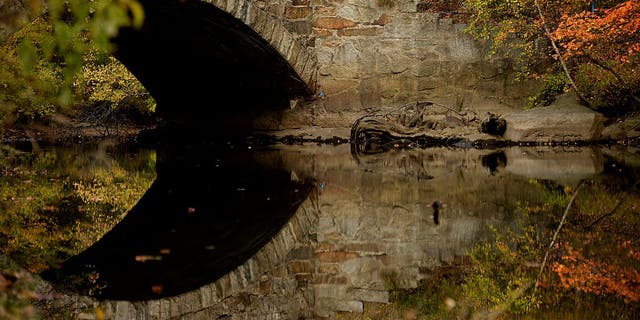
Fall color reflections at the Blackstone River in Whitinsville, Massachusetts.
(Photo by Essdras M Suarez/The Boston Globe via Getty Images)
Apples quickly become a symbol of American bounty.
When British troops invaded Brooklyn during the American Revolution in 1776, the British were stunned by the splendor of the orchards.
The redcoats “regaled themselves with the fine apples, which hung everywhere upon the trees in great abundance,” wrote author David McCullough in “1776,” his epic work of history.
Bunker, the Maine apple expert, said apples symbolize the breadth of the American experience, born overseas but rooting themselves deeply in the soil of the New World.
CLICK HERE TO GET THE FOX NEWS APP
“Apples are just like us,” the apple romantic said. “They come in many colors, many sizes and many shapes. They are well rooted, just like we all want to be. They are collaborative, communicative — and they gift us with beautiful fruit.”
Apples, he also said, “teach us what it means to be alive and joyful on earth.”
To read more stories in this unique “Meet the American Who…” series from Fox News Digital, click here.
 Iktodaypk Latest international news, sport and comment
Iktodaypk Latest international news, sport and comment

